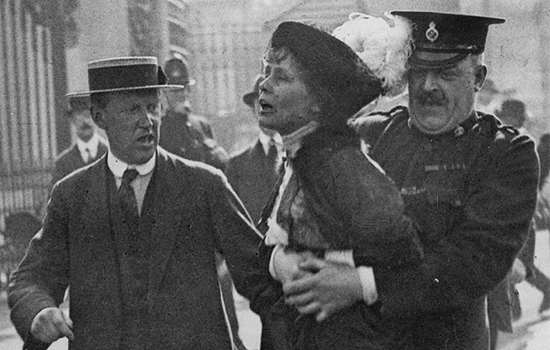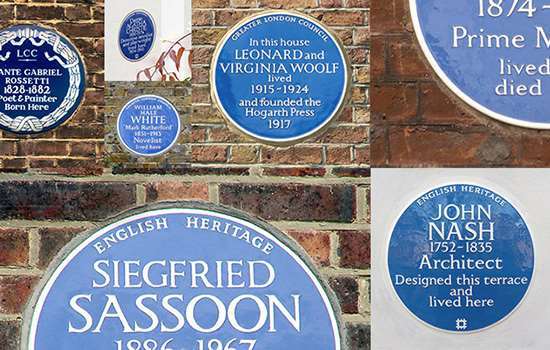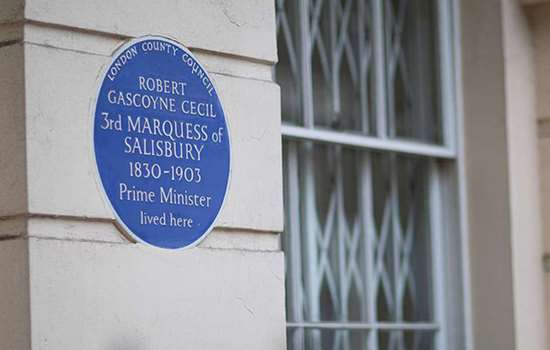Noor Inayat Khan (1914-1944)
Plaque erected in 2020 by English Heritage at 4 Taviton Street, Bloomsbury, London, WC1H 0BT, London Borough of Camden
All images © English Heritage
Profession
SOE Agent
Category
Armed Forces
Inscription
NOOR INAYAT KHAN GC 1914-1944 SOE Agent codename ‘Madeleine’ stayed here
Material
Ceramic
The secret agent Noor Inayat Khan was the first female radio operator to be sent into occupied France during the Second World War. She was posthumously awarded the George Cross and the Croix de Guerre with Gold Star. A blue plaque commemorates her at 4 Taviton Street in Bloomsbury, where she stayed in 1942–3.
EARLY LIFE AND TRAINING
Noor Inayat Khan was born to an American mother – the poet Amina Begum – and an Indian father – Inayat Khan – who was a musician and Sufi teacher. After spending her early years in London, Noor lived with her family in Paris for much of her life. She studied child psychology at the Sorbonne and was pursuing a career as a children’s writer when the Second World War broke out. Despite their pacifist Sufi upbringing, Noor and her family decided to move back to England to join the fight against fascism. They left France days before the fall of Paris in June 1940.
Noor enlisted in the Women’s Auxiliary Air Force (WAAF) as Nora Inayat Khan on 19 November 1940 and towards the end of 1941 she applied for a commission in Intelligence. In May 1942 she was posted ‘for duties as a wireless operator’ and sent to Compton Bassett in Wiltshire, where she was the first member of the WAAF to receive this extra training. She was called to interview in London on 10 November 1942 by the Special Operations Executive (SOE), the independent British Secret Service set up by Churchill to conduct subversive warfare. The following year she received paramilitary training at a number of secret locations across Britain.
4 TAVITON STREET
Noor Inayat Khan lived a peripatetic existence for much of her time in England in the 1940s. Her home was wherever her family was, and from mid-1942 until after she left for France in June 1943 this was 4 Taviton Street in Bloomsbury, where her mother lived. She wrote to her brother from the address in the spring of 1943, telling him:
I am a busy little girl now, and life is just full of activity and interest. I feel I am making up for all the time lost at Abingdon. I hope I will be here when you come back
Noor would later scratch the address onto the bottom of her feeding bowl while imprisoned in Pforzheim, Germany, in order to communicate with fellow prisoners: ‘Nora Baker, Radio Office Service RAF, 4 Taviton Street, London’.
She also frequently stayed with her friend, Jean Overton Fuller, down the road at 1 Taviton Street when number 4 was full. On one occasion in the autumn of 1942 Noor sat down on the staircase to write a note to say that ‘it is lovely to know I may come to your darling flat – I do enjoy it.’
SERVICE IN FRANCE AND CAPTURE
On the night of 16 June 1943 Noor was flown to France. Her task was to make contact in Paris with Henri Garry (codename Cinema or Phono) and to serve as his wireless operator in the Le Mans area. Her codename was ‘Madeleine’ – the name of a character from one of her own stories. Soon after her arrival, the Gestapo made multiple arrests and the undercover network she was part of collapsed.
Noor chose to stay in France in order to keep communications open with her French comrades. Having managed to get her radio set from Le Mans to her Paris safe house, she was now the only transmitting agent in Paris. By keeping on the move and changing her appearance, she was able to evade the Germans for three-and-a-half months while continuing to transmit messages, via radio and the SOE air force, to Baker Street. The Germans had a full description of ‘Madeleine’ and had pursued her since July.
She was preparing to return to England when, on 14 October, she was betrayed. She was captured by the Gestapo and taken to their Paris headquarters at Avenue Foch. Noor escaped at least twice but was recaptured and sent to Germany ‘for safe custody’. At Pforzheim Prison, ‘Nora Baker’ was considered highly dangerous and kept in isolation with only short periods out of chains. Despite beatings, she refused to cooperate.
On 11 September 1944 she was sent with three other female agents on the 250-mile journey to the Dachau concentration camp. Evidence given at the War Crimes trials and by surviving prisoners revealed that Noor was singled out for a night of torture and then, like her comrades, was shot in the head. She had revealed nothing to her captors, not even her real name, and her last word was said to have been ‘Liberté!’
She was awarded the Croix de Guerre with Gold Star on 16 January 1946 and, on 5 April 1949, the George Cross.
Nearby Blue Plaques
More About Blue Plaques



